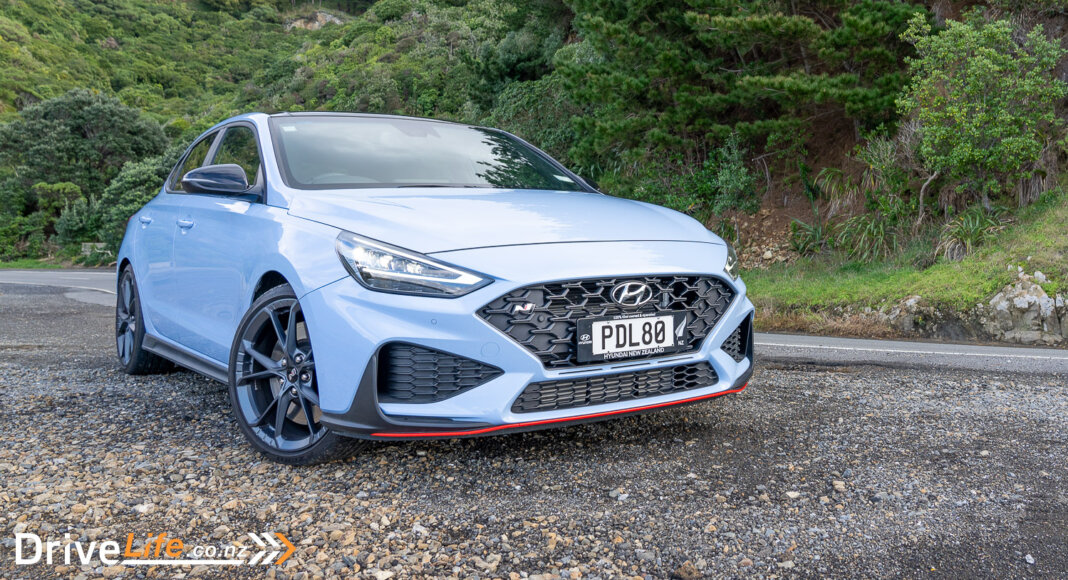Volkswagen Golf GTi, Renault Megane RS, Ford Focus ST. All performance cars with a known pedigree and in some cases, decades of evolution.
Then there are the new kids on the block, the Bart Simpsons of the hot hatch world that wear a cap on backwards and thumb a nose up to the established hot hatches. The Honda Civic Type R, Ford Fiesta ST, the new Hyundai i20N, and the Hyundai i30N all come into this group.
We can get some flack here at DriveLife because we love manual gearboxes. While an automatic transmission might be the best option for daily driving in your average car, a manual gearbox in a performance car just feels right for the best driving experience. This year, Hyundai announced an automatic version of the i30N.
Does that make the i30N DCT a lesser car? Time to crunch the feels on this. You might be surprised at the outcome.
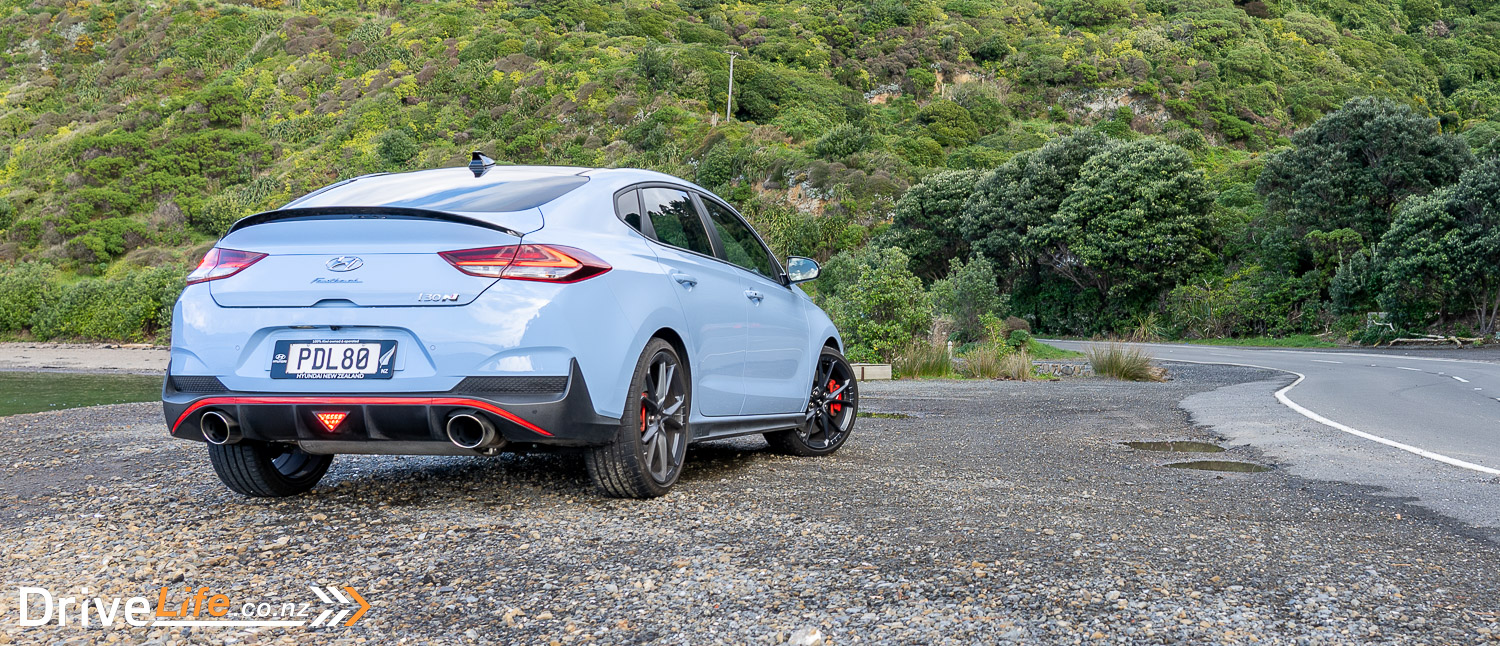
What We Like and Dislike About The 2022 Hyundai i30N Fastback DCT
| What we like | What we don’t like |
| Engine noise Exhaust noise Handling Practicality Looks DCT transmission Torquey Fit for purpose | Usual DCT quirks Fairly plain inside No rear window wiper Turning circle Tyre noise Price |
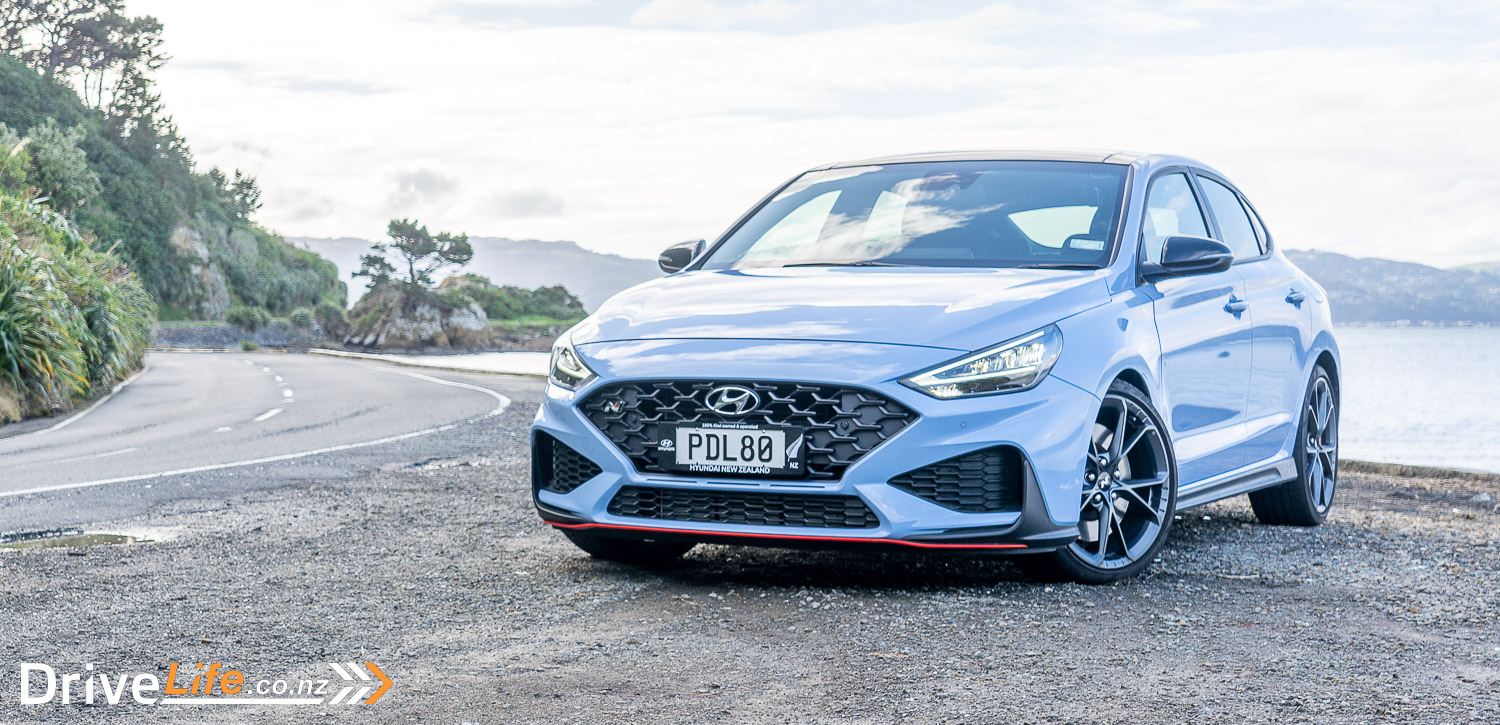
What’s In The 2022 Hyundai i30N Range?
Although technically part of Hyundai’s i30 range, the i30N is better treated as its own entity – akin to BMW and M.
The i30N is offered in two formats, either as a hatchback or as the Fastback. The Fastback is 11kg heavier and sits slightly lower and on a longer wheelbase, compared with the i30N hatch. Otherwise, the specifications are virtually the same across both vehicles.
The i30N range is powered by Hyundai’s Theta T-GDI turbocharged 2.0-litre four-cylinder producing 206kW of power at 6000rpm and 370Nm of torque between 1450–4700rpm. The torque figure climbs another 25Nm to 392Nm when the driver reaches peak torque, triggering the i30N’s over-boost function. The engine is paired up to a 6-speed manual transmission, with switchable automatic rev-matching, or you can opt for an 8-speed dual-clutch automatic transmission.
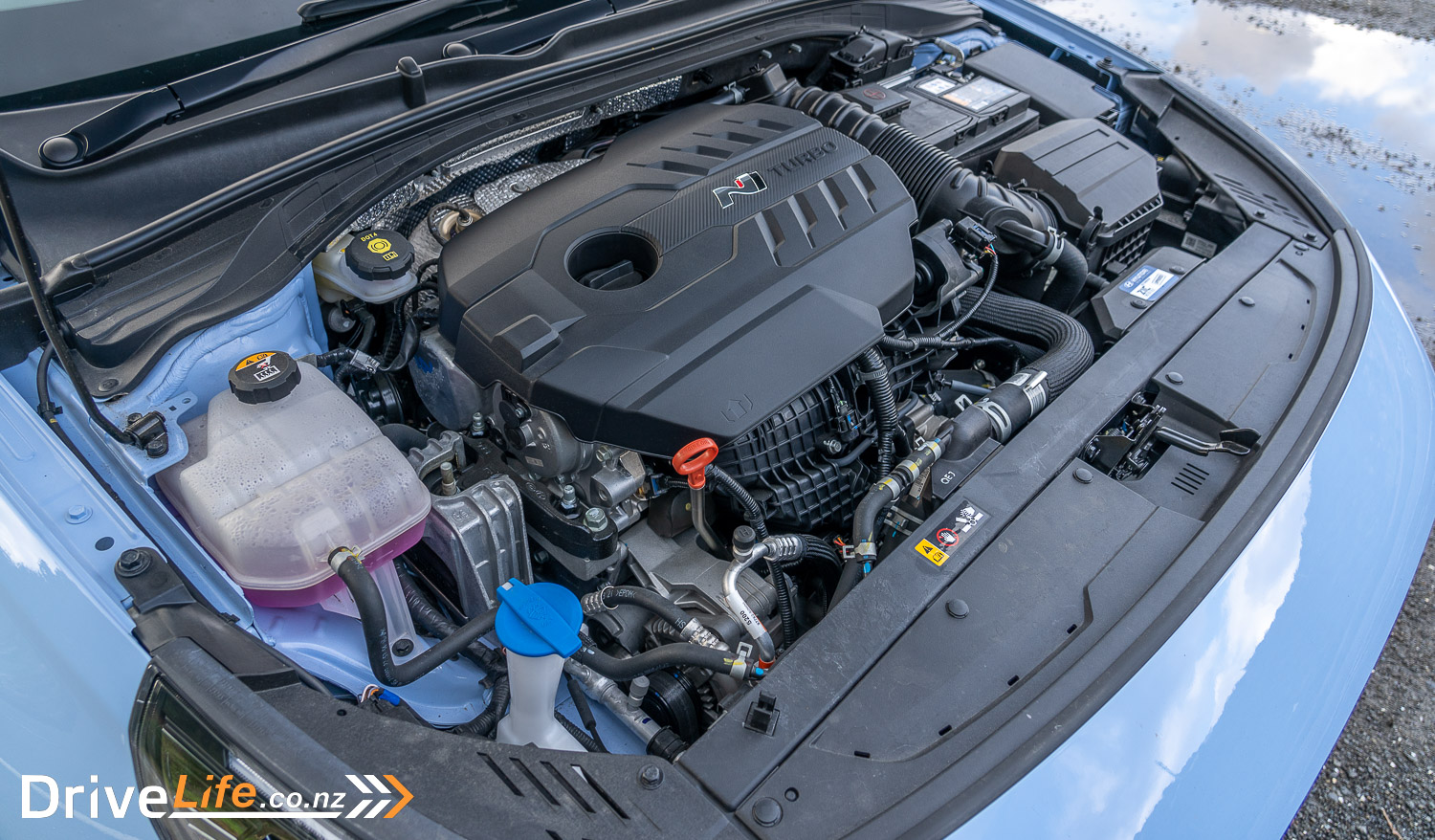
This combination means 0-100kph in 6.1 seconds, and a top speed of 250km/h.
The i30N is well-equipped for the hot hatch segment, offering a number of standard features, including:
- 8’’ touchscreen with SatNav
- Apple Carplay and Android Auto
- Dual-zone climate control
- Alloy pedals
- Heated sports bucket seats
- 12-way adjustable power seats with driver’s memory and extendable thigh support
- Heated steering wheel
- Wireless smartphone charging
- Sunroof with power-operated blind
- Front and rear parking sensors
- Windscreen auto-defog
- Cruise control
- Smartkey and push button start
- Rain sensing wipers
- Power-folding mirrors
- Rear privacy glass
- Electro-chromatic rear vision mirror
- LED front and rear lights with DRLs
- LED courtesy and puddle lights
- 7 airbags,
- Tyre pressure monitoring
- Automatic dusk-sensing headlights
- Hill-start assist control
- Plus Hyundai SmartSense package:
- Autonomous emergency braking
- Driver attention alert
- Forward collision warning
- Lane-keep assist
The i30N is also equipped with a number of performance features as standard, including; 19’’ alloys with Pirelli P-Zero HN’s, performance brakes, an electro-mechanical Limited Slip Differential, electronically controlled suspension, an active variable exhaust system, rear strut bar, automatic rev-matching, a configurable N-race computer and drive mode system, and the all-important Launch Control.
The i30N Fastback is available in 6 different colours, including:
- Polar White
- Phantom Black
- Micron Grey
- Engine Red
- Performance Blue
- Plus a further offering exclusively for the i30N Fastback: Shadow Grey.
The i30N Fastback starts at $62,990, while the i30N hatchback starts at $58,990. The i30N Fastback DCT we are testing is priced at $69,990. You can read up on the full specifications on Hyundai New Zealand’s website.
How Does The 2022 Hyundai i30N DCT Compare To Its Competition?
The Ford Focus ST is looking like a bit of a bargain in this chart.
| Make/ Model | Engine | Power/ Torque kW/Nm | 0-100km/h, seconds | Fuel L/100km | Boot Space, litres | Price (excl CCP) |
| Volkswagen Golf R (AWD) | 2.0-litre, 4-cylinder turbo-petrol | 235/400 | 4.8 | 8.6 | 374 | $77,990 |
| Hyundai i30N Fastback DCT | 2.0-litre, 4-cylinder turbo-petrol | 206/392 | 6.1 | 8.5 | 436 | $69,990 |
| Renault Megane R.S. Trophy 300 | 1.8-litre, 4-cylinder turbo-petrol | 221/420 | 5.7 | 8.8 | 434 | $68,990 |
| Subaru WRX GT tS Wagon (AWD) | 2.4-litre, 4-cylinder turbo-petrol | 202/350 | 6.1 | 8.5 | 492 | $64,990 |
| Honda Civic Type R | 2.0-litre, 4-cylinder turbo-petrol | 228/400 | 5.7 | 8.8 | 420 | $62,990 |
| Ford Focus ST | 2.3-litre, 4-cylinder turbo-petrol | 206/415 | 5.7 | 9.6 | 273 | $59,990 |
All prices above exclude the refund/additional cost of the New Zealand Clean Car Programme.

First Impressions Of The 2022 Hyundai i30N DCT
I think if you told someone you were buying a lilac-coloured i30N, they’d probably start to question your taste, or perhaps suggest you check if you are colour-blind. Because an i30N finished in Performance Blue looks lilac – that’s how I described it to people.
But in the flesh? Perfect. It absolutely suits the car and its shape, and it turns heads. The red brake callipers help things here, adding that hint of “I’m something special” to the car, and the fastback body shape nails it for me.
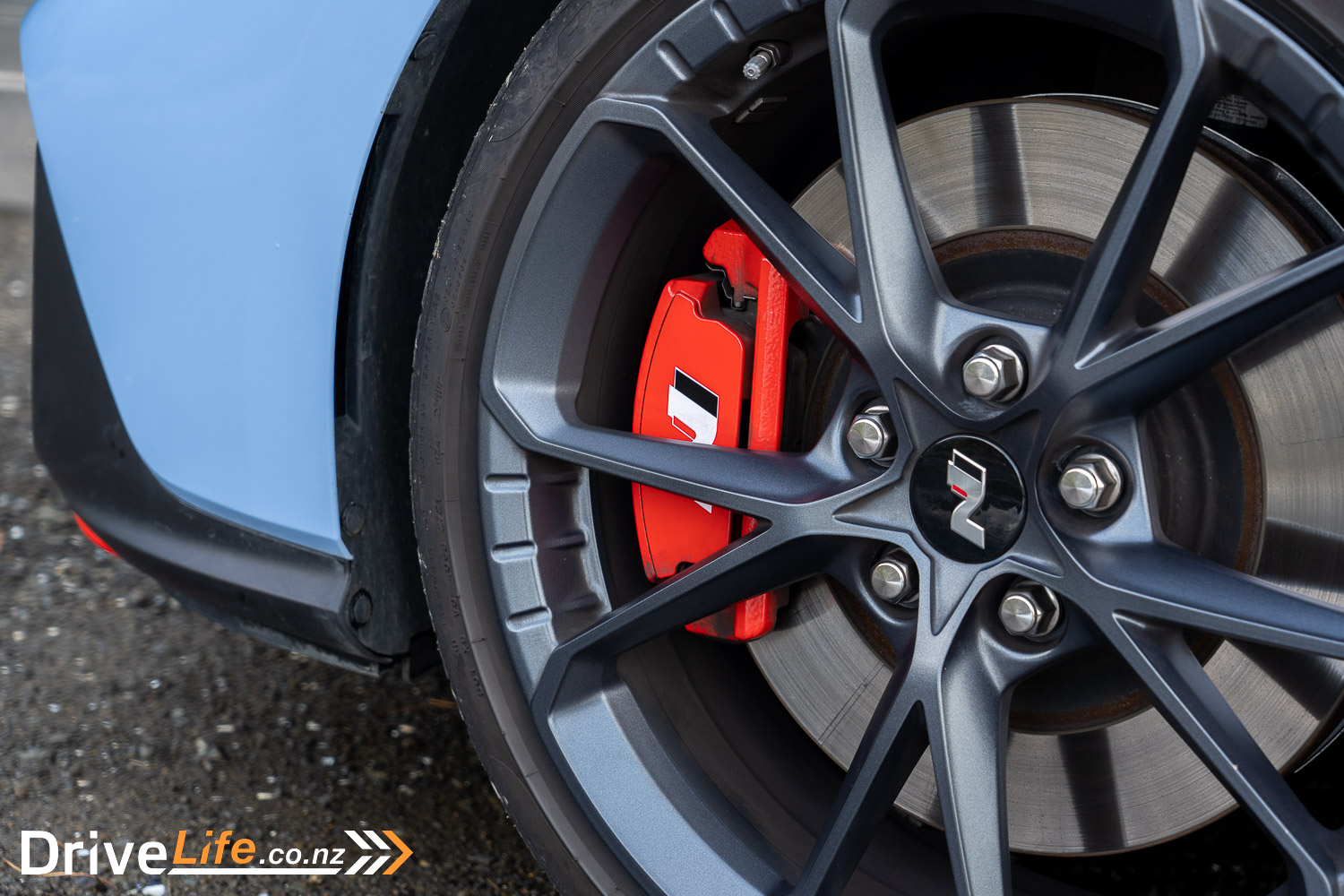
While the Honda Civic Type goes balls-out with lots of angles and jutty bits, the i30N almost goes Q car on it, keeping it subdued but hints of performance if you know where to look.
Around the back, it’s all good news with those dumpy exhausts and triangular rear fog light. I’ve said it before and I stand by it; for me, the fastback looks better than the hatchback.
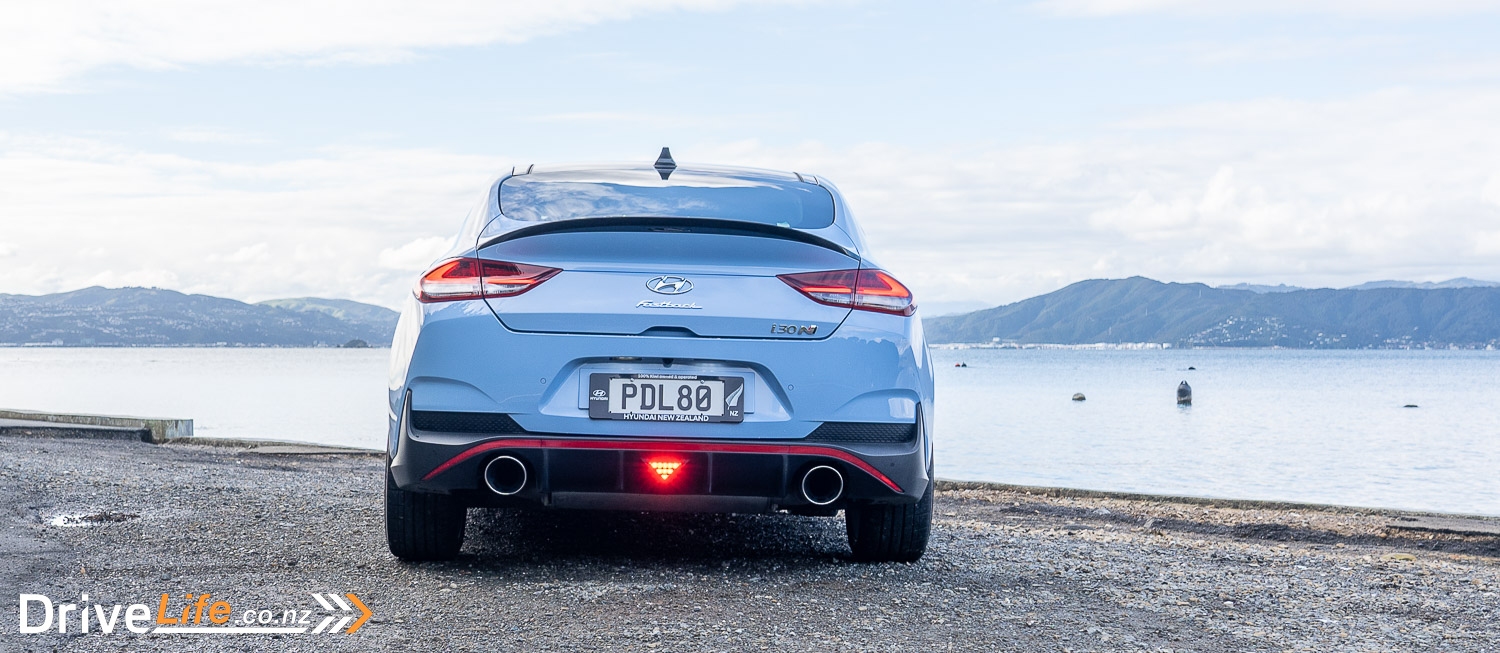
What’s The Interior Like In The 2022 Hyundai i30N DCT?
I’m not going to reinvent the wheel here, if you want to read about the i30N’s interior, check out Alistair’s review here. Same colour, same shape, but a manual.
Long story short, it’s nothing fancy, not really anything sporty but gets the job done.
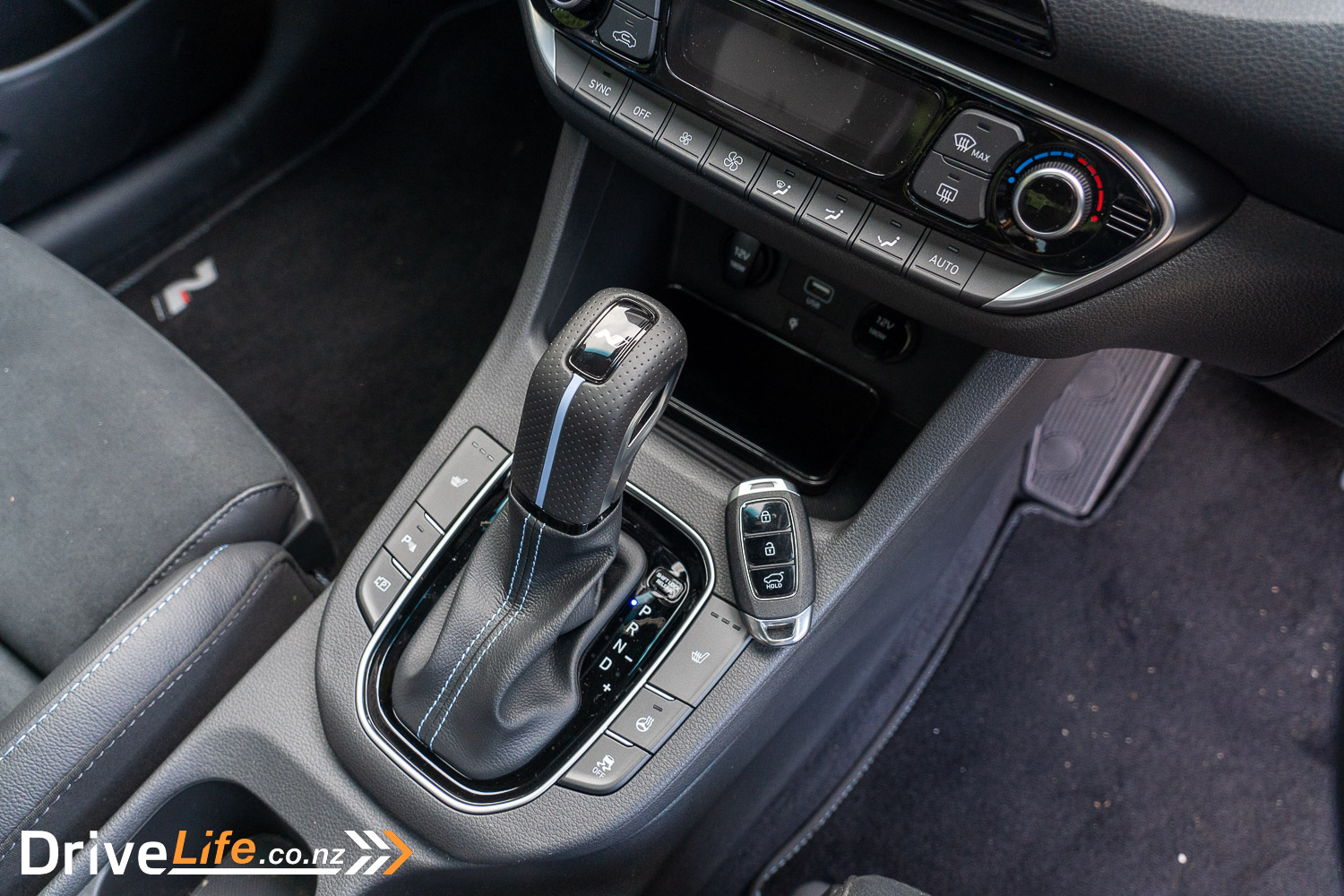
What’s The 2022 Hyundai i30N Fastback DCT Like To Drive?
Since we’ve already reviewed the manual i30N Hatchback and manual i30N Fastback, this review will focus on three things:
- Would I buy the i30N DCT over the manual?
- Is the i30N DCT better than the Renault Megane RS Trophy 300?
- Is the i30N DCT better than the Subaru WRX GT tS Wagon?
I found it hard to stop myself from calling the i30N Fastback a hot hatch. Since I’d already been in the hatch version, it just feels right. But since it’s a fastback and “hot hatch” means hot hatchback, does that make the car a “hot fast”? I’m not sure, but maybe I’ve just coined a new term. I should trade mark it.
Anyway, back to the car. We love the i30N manual, and how similar – and yet also so different – it is to the Honda Civic Type R. But the Type R is manual-only, giving Hyundai New Zeland an advantage in sales for those who want to daily drive their i30N. Hyundai has said that often they get sales of the car from someone who wants a performance car, but their partner wants an automatic. Hyundai says that means the i30N is a popular choice for couples in that situation.
But that doesn’t make the DCT version better – wouldn’t that make it a compromise? Yes, we know, a good automatic (dual-clutch or torque-converter automatic) is going to be faster off the line than a manual, and probably more economical too. However, a manual gearbox gives the driver that extra level of involvement; you feel more part of the car when it’s a manual gearbox, and the extra engine braking over an automatic can’t be denied.
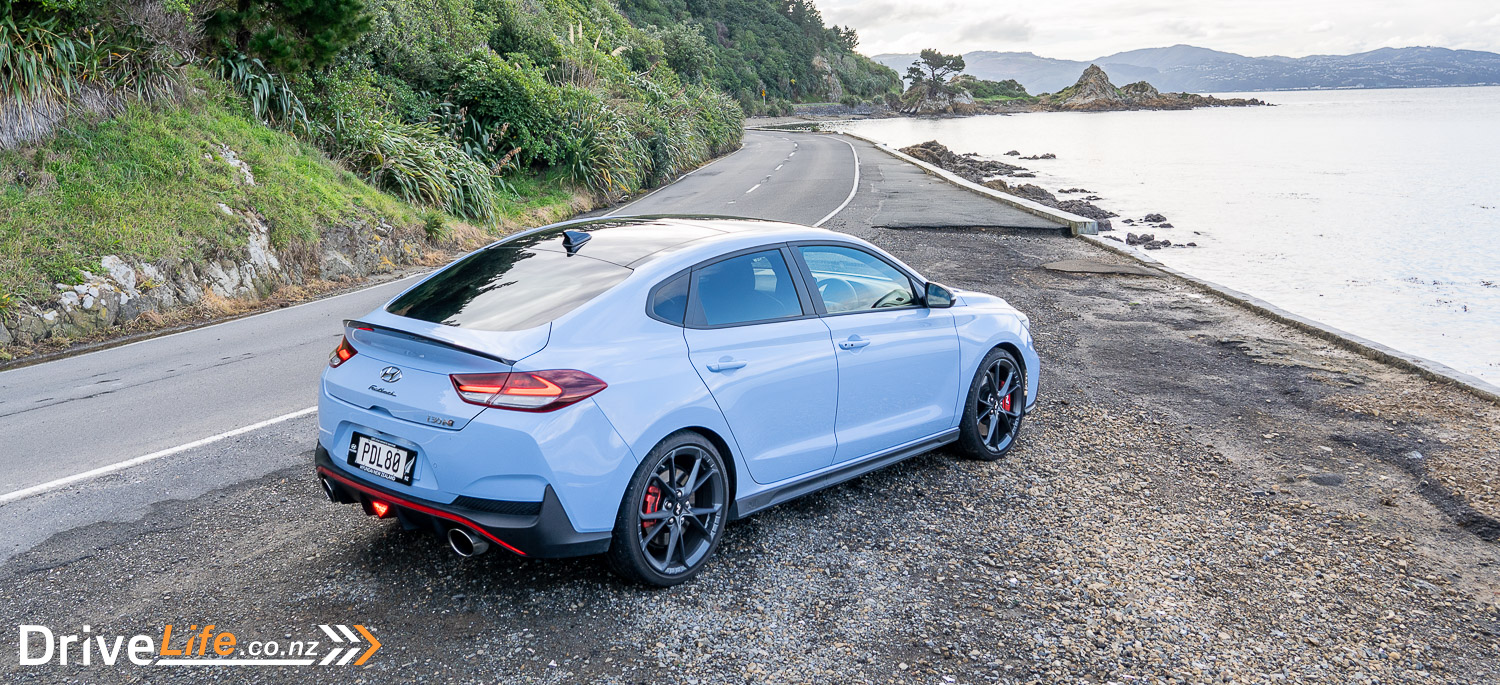
And yet, I loved the DCT i30N and after a week, and hand-on-heart I’d prefer it over the manual version. Shock, horror, and time to hand in my man card? Not just yet. I’d gotten a taste of the i30N DCT at the Hyundai N Day at Hampton Downs, and thought then it was bloody good. But at that time, I was still a manual lover – especially after getting into the manual-gearbox only i20N.
For my week with the car, I used it as my Daily Driver. While the manual i30N has a nice, light clutch, there are few people that would argue against an automatic transmission being easier for that daily drive/commute/run to the supermarket.
That’s not to mention the performance with the dual-clutch automatic. Yes, it has the same failings as most other DCT gearboxes: some jerkiness at low speeds, and an unwillingness to smoothly reverse up the slight slope of my driveway. But once on the move, changes are quick and in Sport mode, very quick indeed. The DCT version of the i30N will accelerate from 80-120km/h in 3.3 seconds, which is 2.1 seconds faster than the manual gearbox.
At some point, you will hit the NGS button on the steering wheel. I’m pretty sure it just dumps petrol straight into the exhaust since now you have a road car that sounds like a Group B rally car.
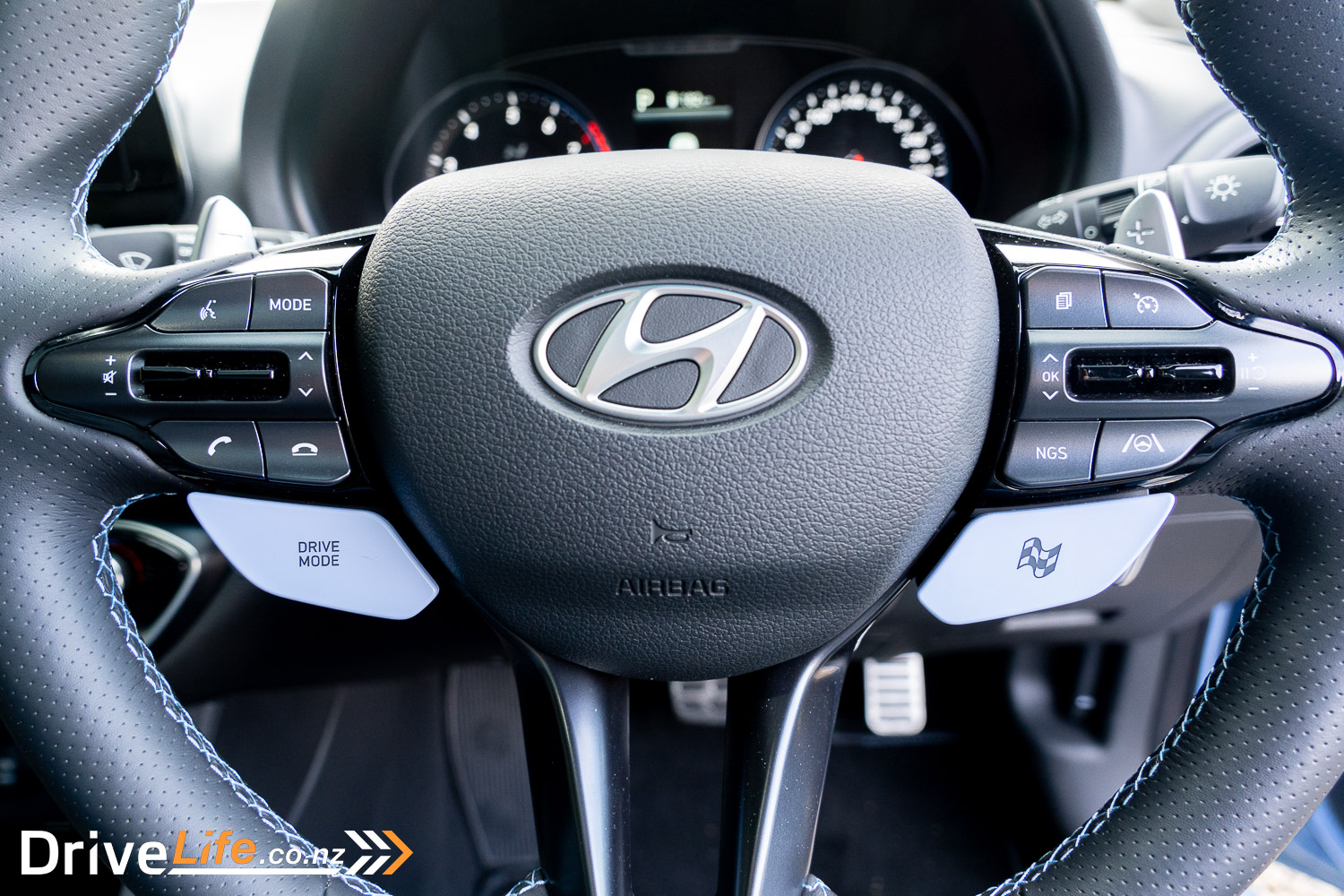
For me, that’s where you can really make the most of that automatic gearbox over a manual. With the NGS button on (“N Grin Shift”…groan), gear changes are so bloody quick they’re over in milliseconds. It’s brap, gear change! Brap, gear change! The gearbox flies up through the cogs since this engine loves to rev out quickly. The redline isn’t that high at 6,750RPM, but it will get to that redline in no time at all. NGS lasts for 20 seconds – you get a countdown timer on the dash – and then cannot be used again straight away. Who wants to be over-boosting their turbo over and over in quick succession?
Note that the manual versions of the i30N don’t have NGS, so yet another reason to purchase the DCT? There’s a caveat here regarding the NGS button: it’s really only for dry weather. Using it in the wet is a handful, with huge amounts of wheelspin at pretty much any speed that you switch it on. Even in the dry, you need two hands on the wheel to keep it straight. Not the end of the world, but that one button could get you into a whole heap of trouble, and I don’t just mean the red and blue flashing lights kind of trouble.
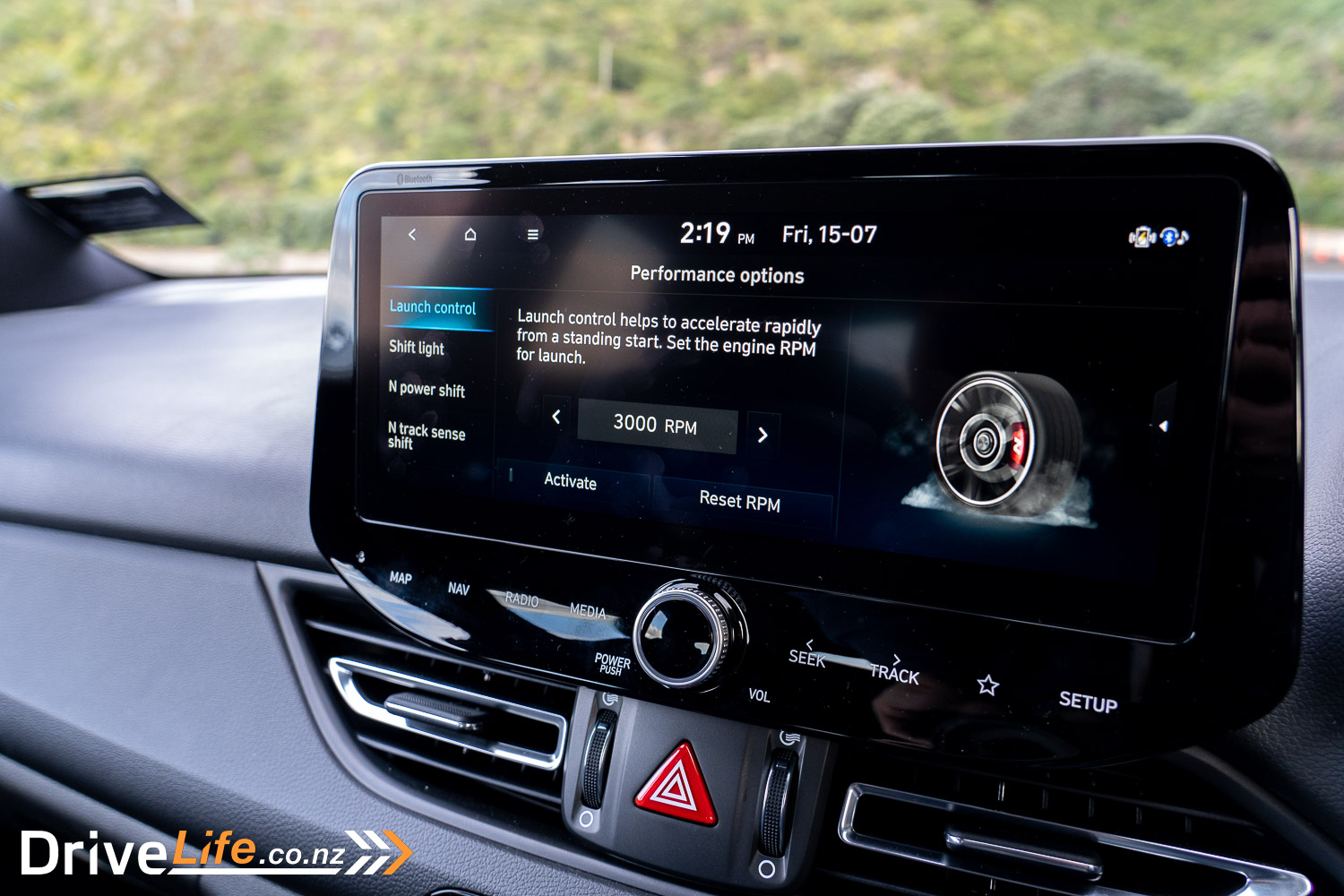
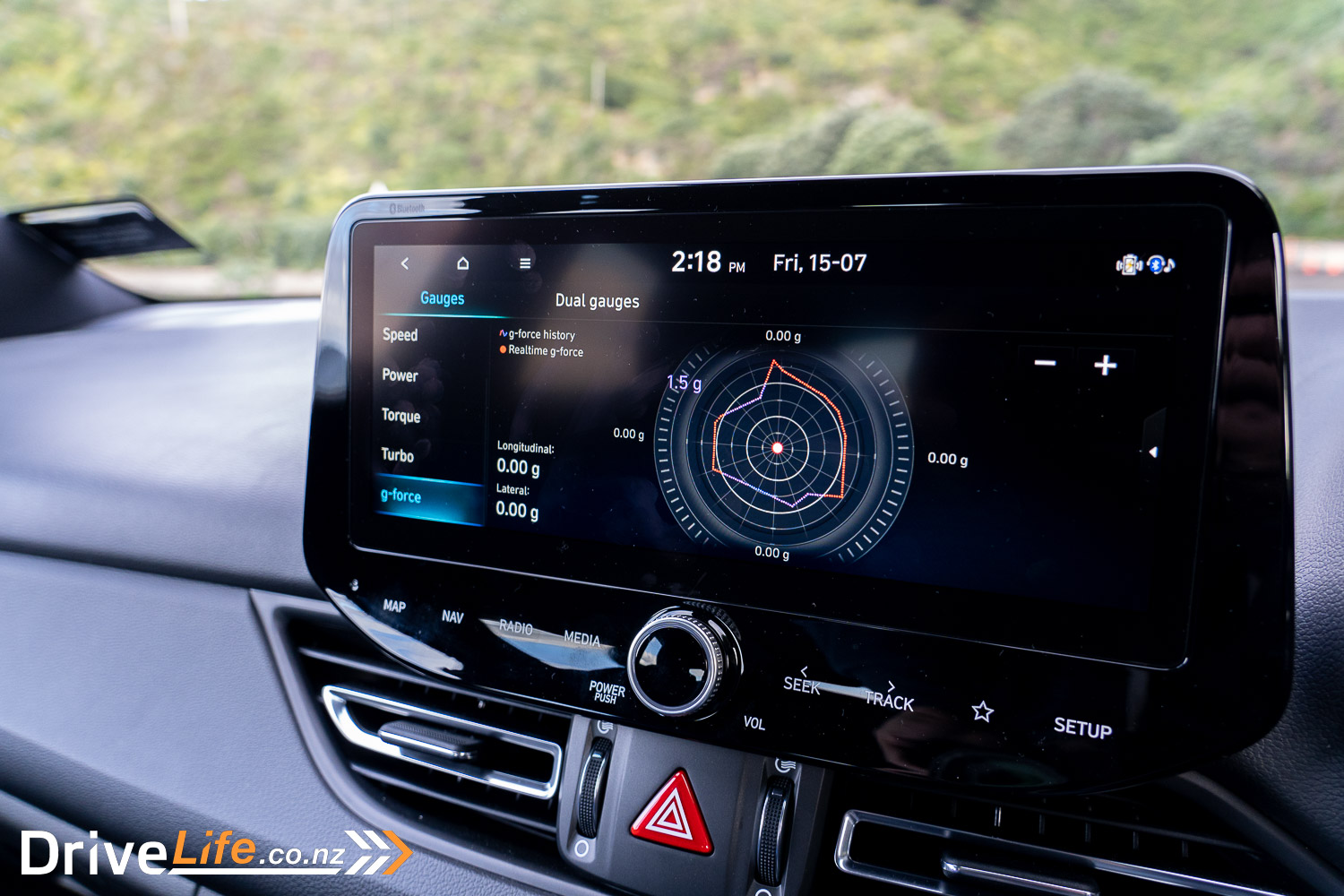
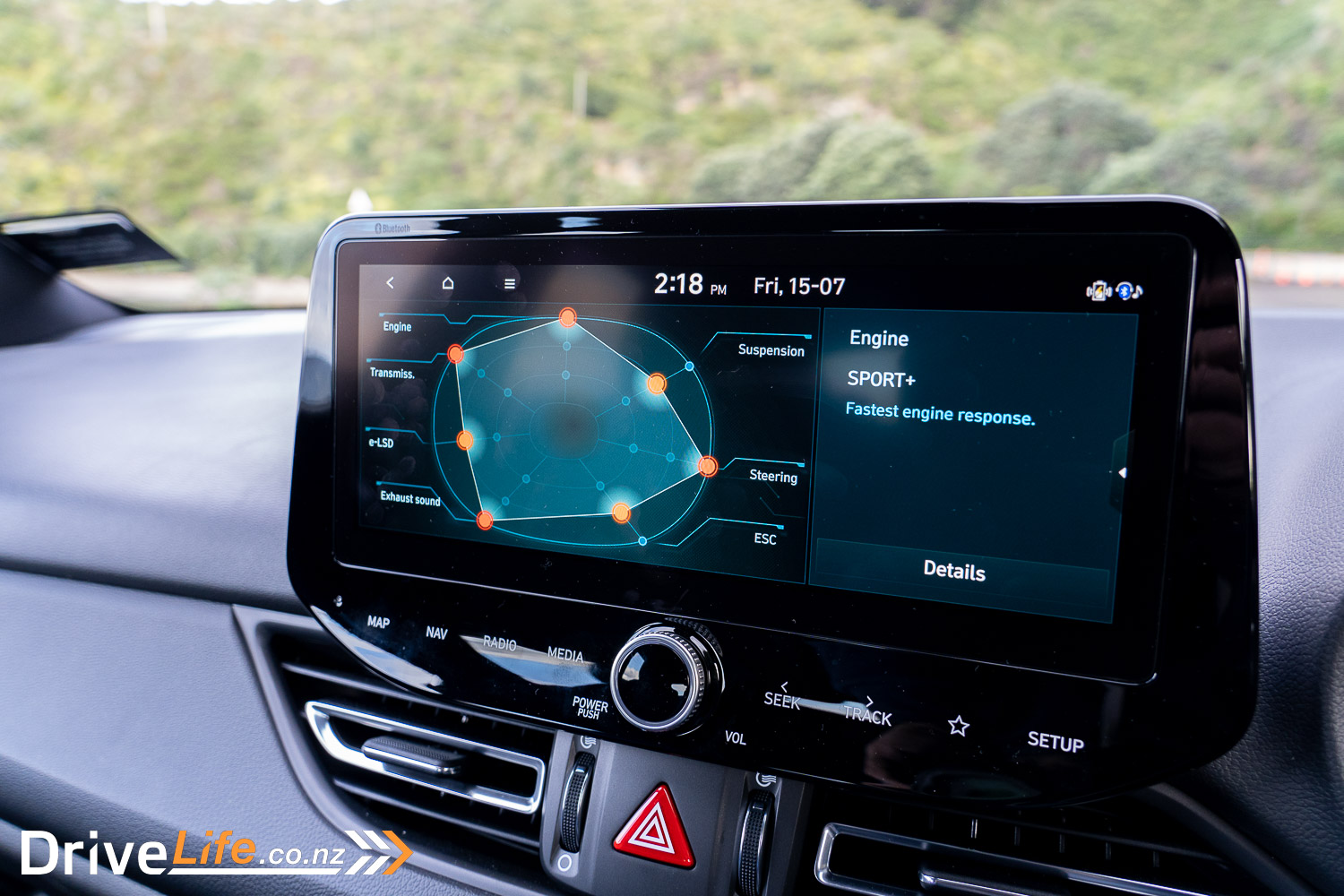
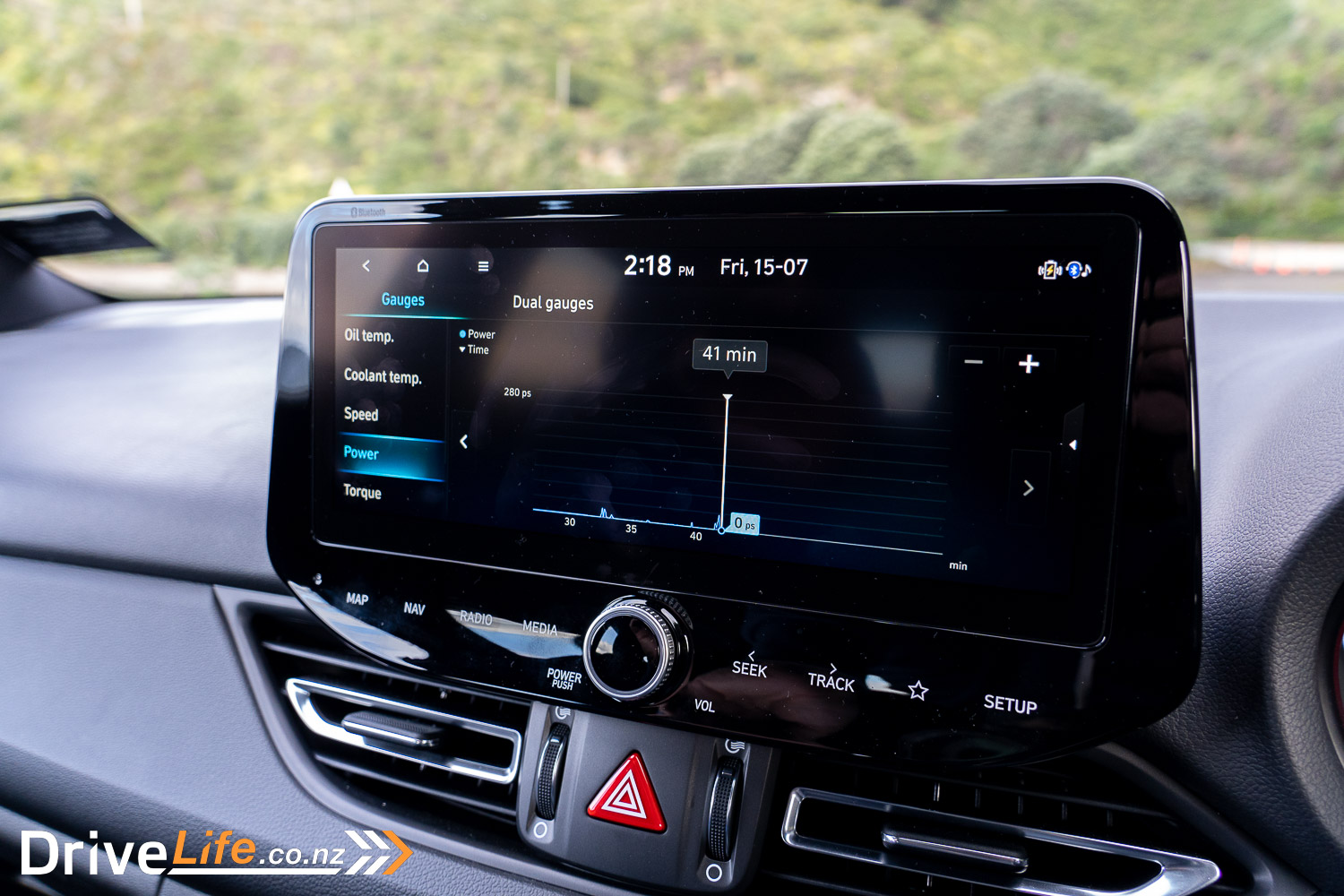
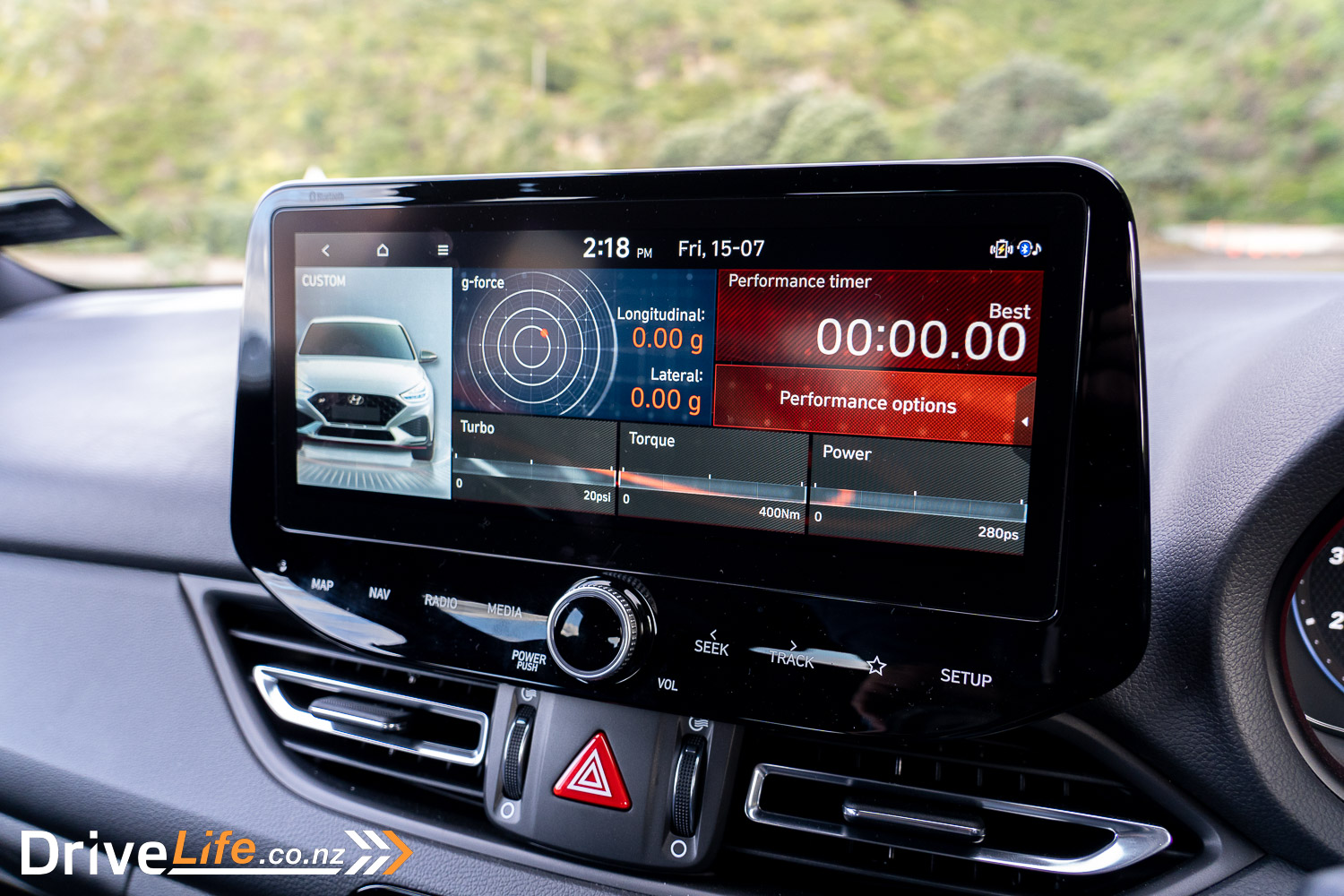
Credit where credit is due: the i30N gets its power down to the road very well. With 206kW of power, an electronic diff helps things along here. Yes, axle tramp and torque steer are both evident, but it’s still impressive how the car will move off from a start on full throttle, even when using Launch Control.
So the automatic – for me – enhances the exhaust sound of the i30N DCT, and that’s what this car is all about. Even in Eco mode it sounds a little mean and starting the car, always reverts to Normal drive mode, and that is just that little bit louder than Eco mode. It’s not enough to wake the neighbours, but it does hint that it’s not a little grey hatchback (or fastback) just for going to the shops. Even my wife, who is totally not a car person, said, “this car rumbles”.
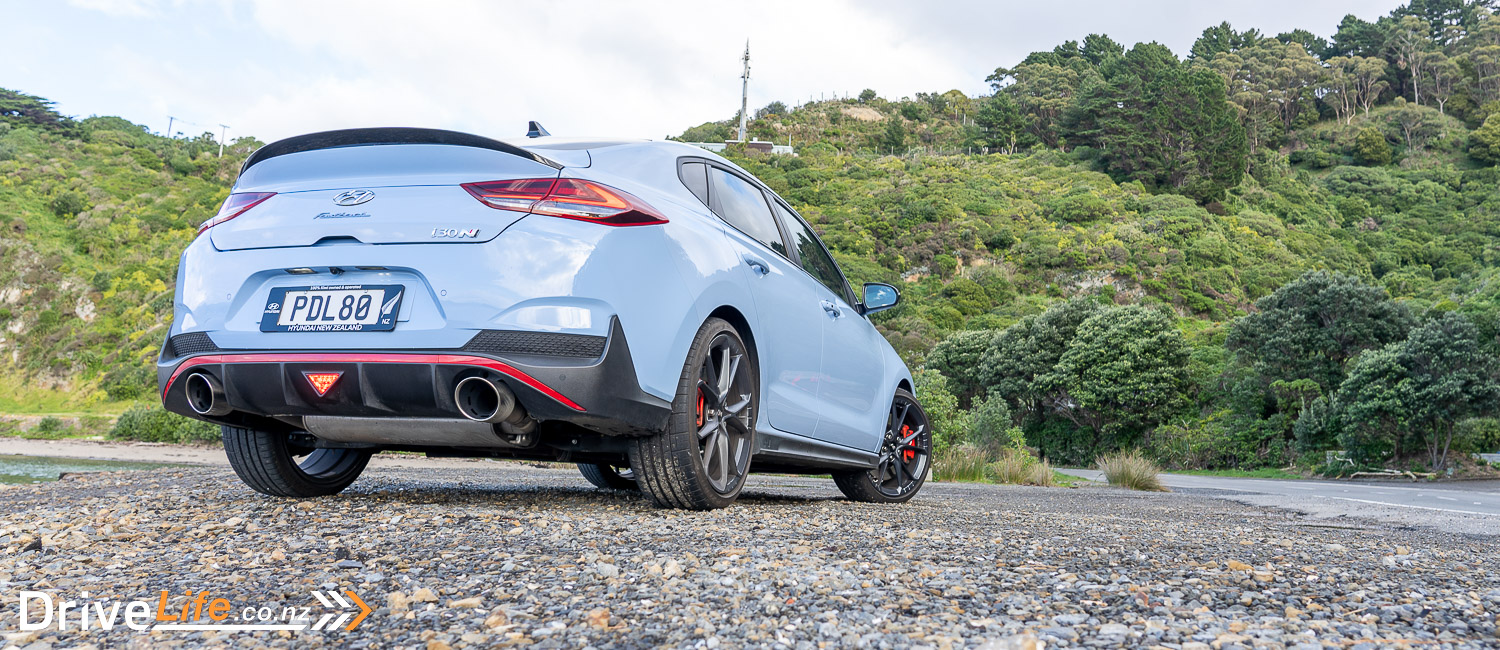
The car also has automatic rev-matching – with either gearbox option – and this is on all the time for the DCT model, even in Eco mode. The manual version of the i30N doesn’t have NGS, so instead the NGS button on the steering wheel is replaced by a rev-matching on/off button.
Eco mode is actually very usable, with all that torque at hand. It’s almost a shame the i30N doesn’t remember what drive mode you last had it in, as it can drive so easily in Eco. I guess that’s another reason why the automatic is better than the manual in this car since you can tootle about in Eco mode and let the transmission do the donkey work.
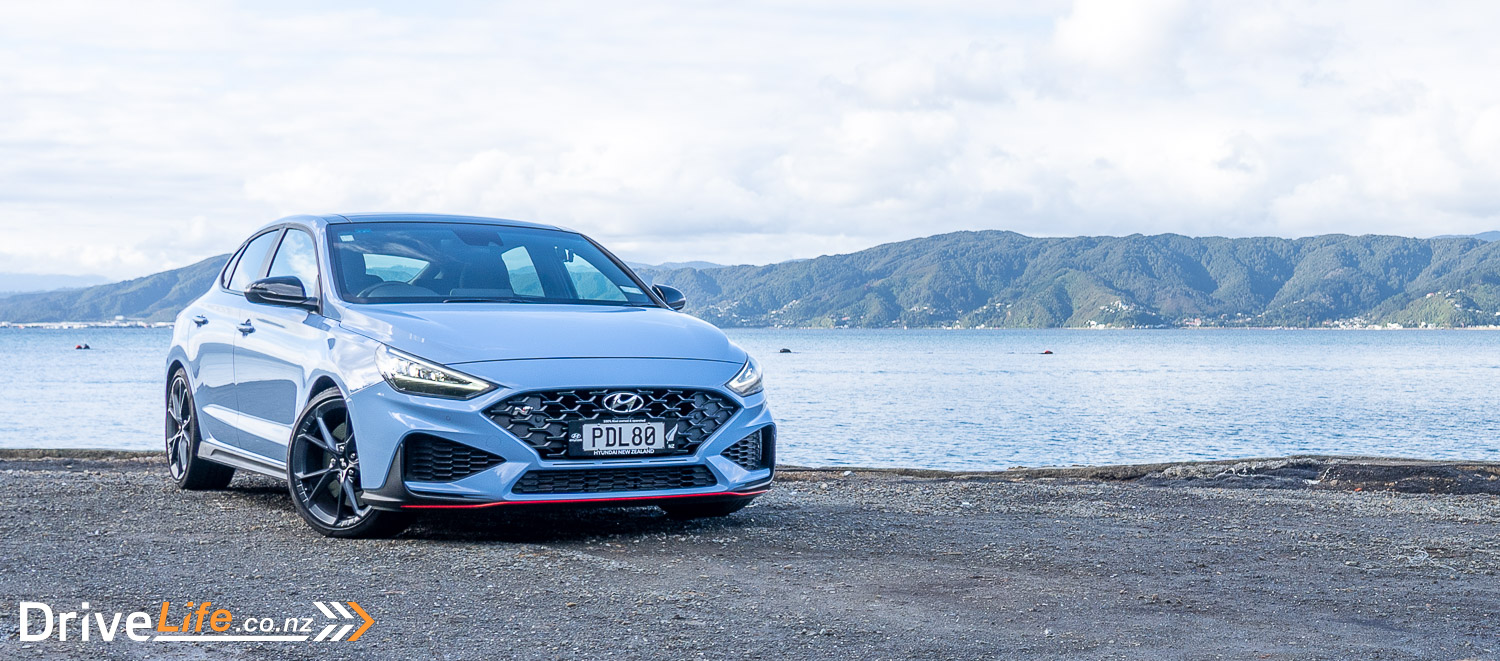
2022 Hyundai i30N DCT vs. Renault Megane R.S. Trophy 300
If I’d prefer the i30N DCT over the manual, does that mean I’d prefer it over the Renault Megane R.S. Trophy 300? Long model name aside, the Megane R.S. is an incredible car. More power and more torque than the i30N and only 1.8 litres. It’s faster to 100km/h and other than being $1,000 cheaper, is very similar to the i30N. Sure, it’s more of a hatchback, but it does also have non-adaptive cruise control and axle-tramp under hard acceleration.
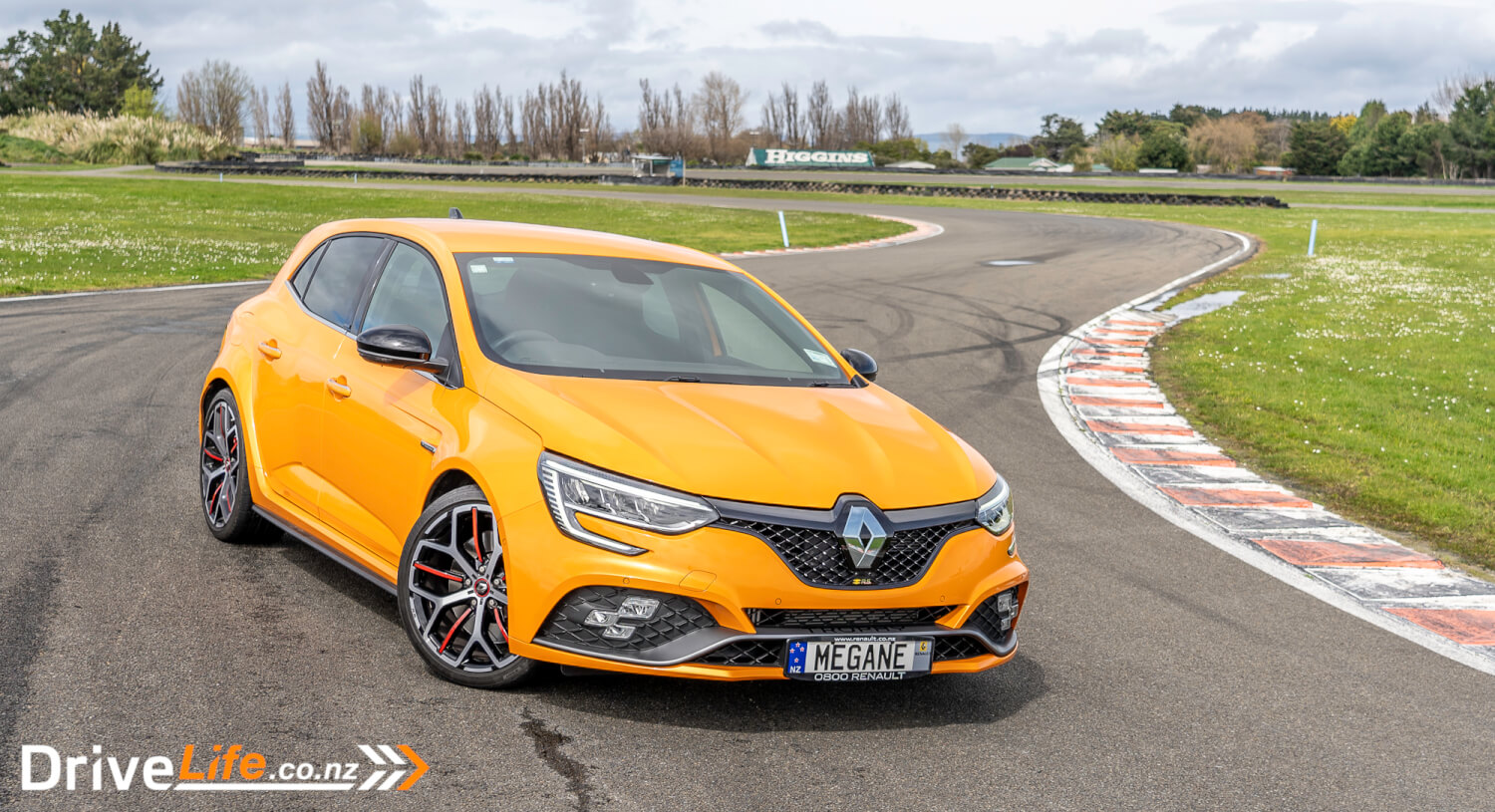
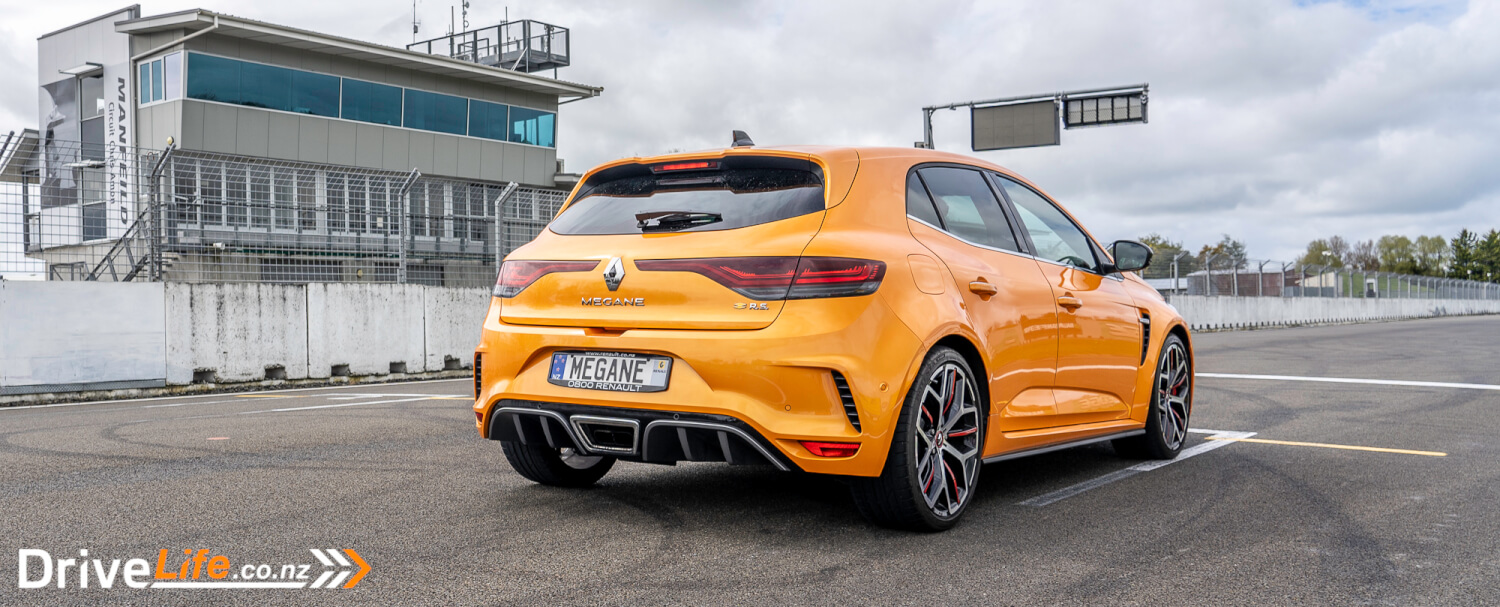
I’m not sure that all i30N buyers would even consider the Megane RS, but I am also sure there are some that would. It’s a great-looking car, with impressive specs and even more impressive handling – better than the i30N. This might be down to the 4-wheel steering on the Megane RS, and improved steering feel. That’s not to say the i30N doesn’t handle well – it does – but the Megane’s handling is superior. Turn-in on the Megane RS is better too; I felt I had to throw the i30N more into the corners, and then accelerate early to push the nose in. It wasn’t bad, but both the Type R and Megane RS are ahead in this area.
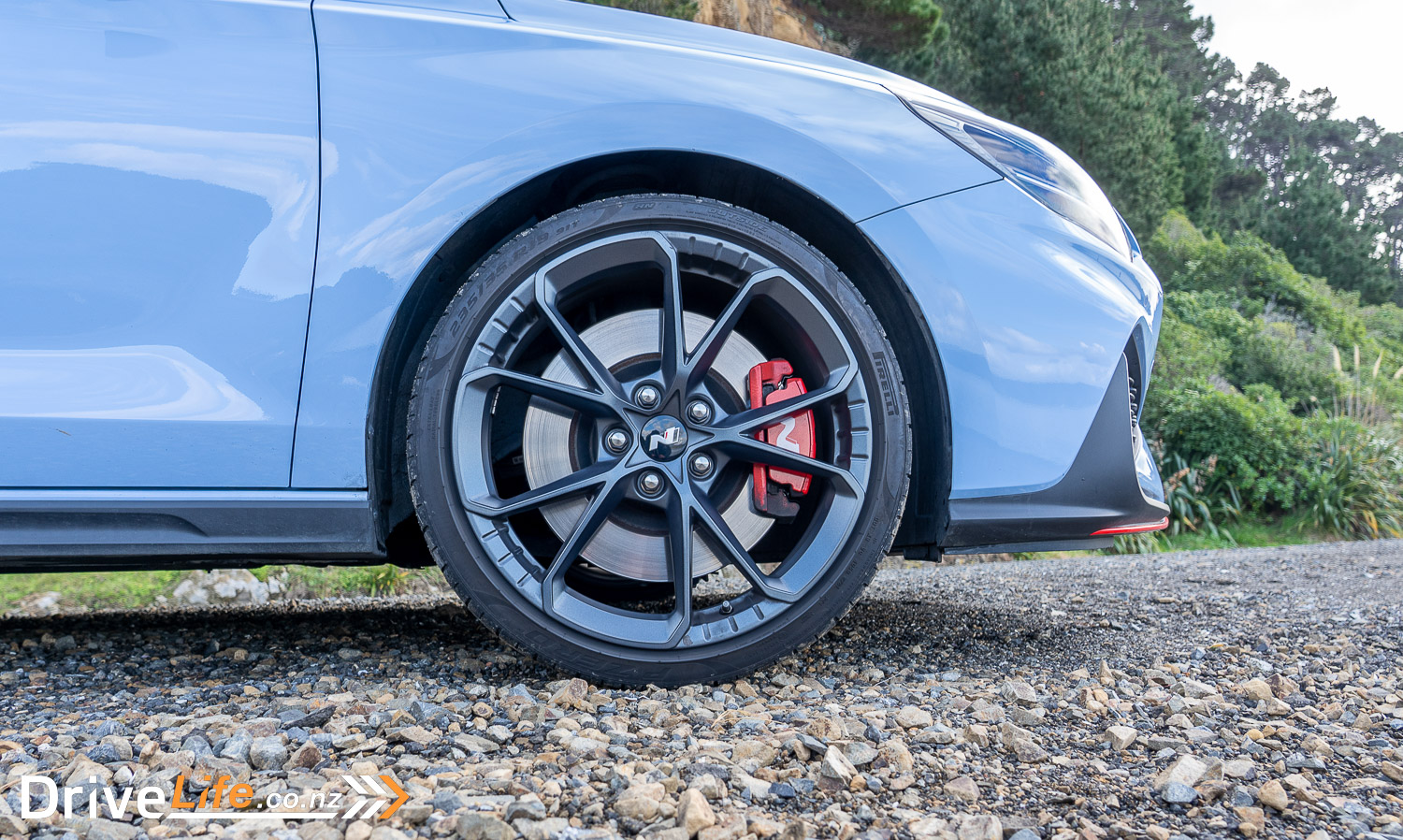
But the Megane R.S. isn’t as good as being your Daily Driver as the i30N, if that’s what you are looking for. The ride is jiggly, as the car doesn’t have adjustable dampers as the i30N does.
Is the i30N better than the Megane R.S. Trophy 300? For me, it depends on what you want. For a weekend twisty road blaster, I’d love to open the garage door to see the Megane R.S. in there. Daily Driver? No real arguments, it’s got to be the i30N Fastback DCT.
2022 Hyundai i30N DCT vs. 2022 Subaru WRX GT tS Wagon
This year saw the release of the slightly-tweaked 2022 Subaru WRX, in a variety of models. I got to review the 2022 WRX GT tS Wagon (another too-long name!) just a couple of weeks before the i30N – almost perfect for comparison.
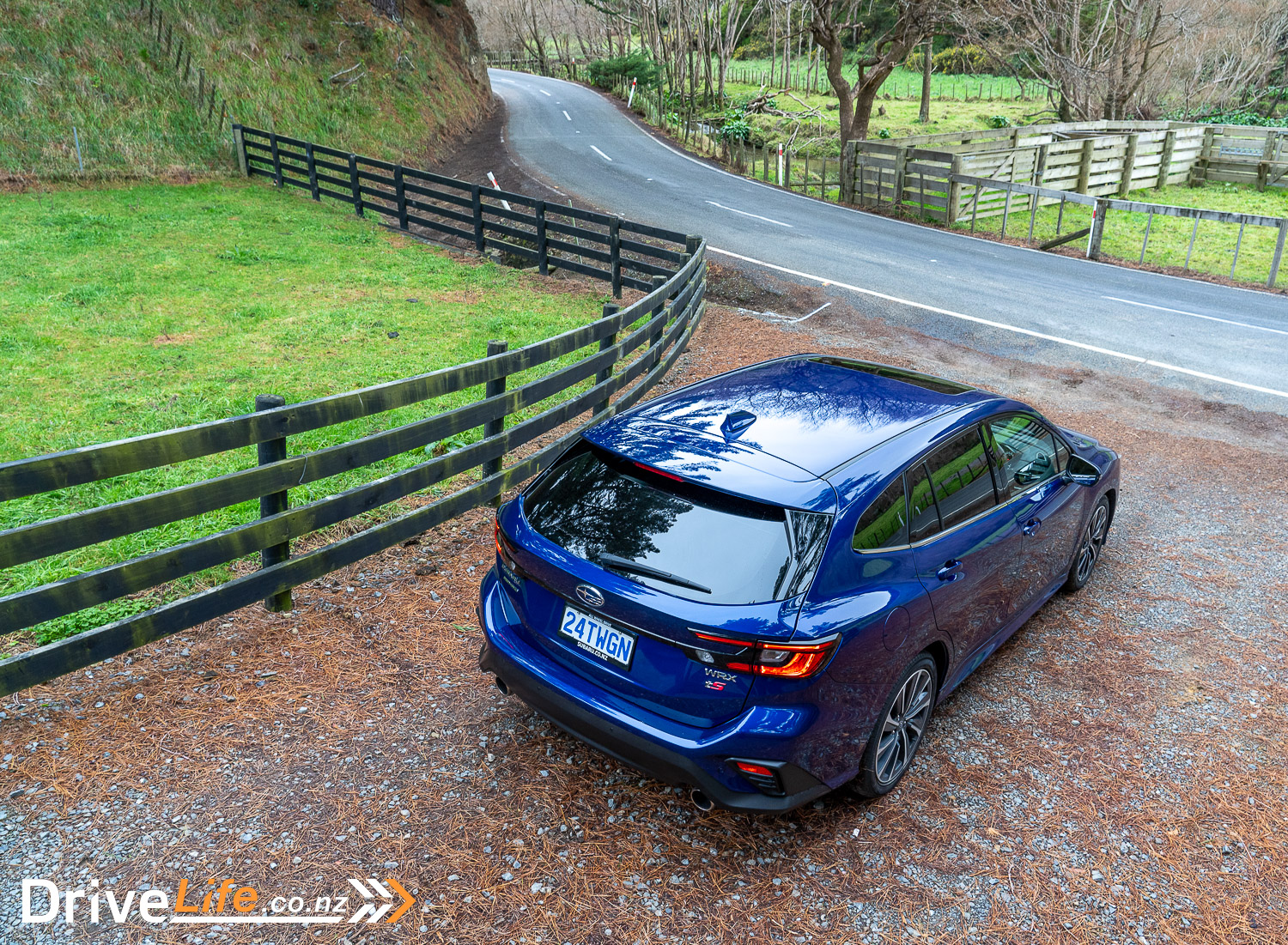
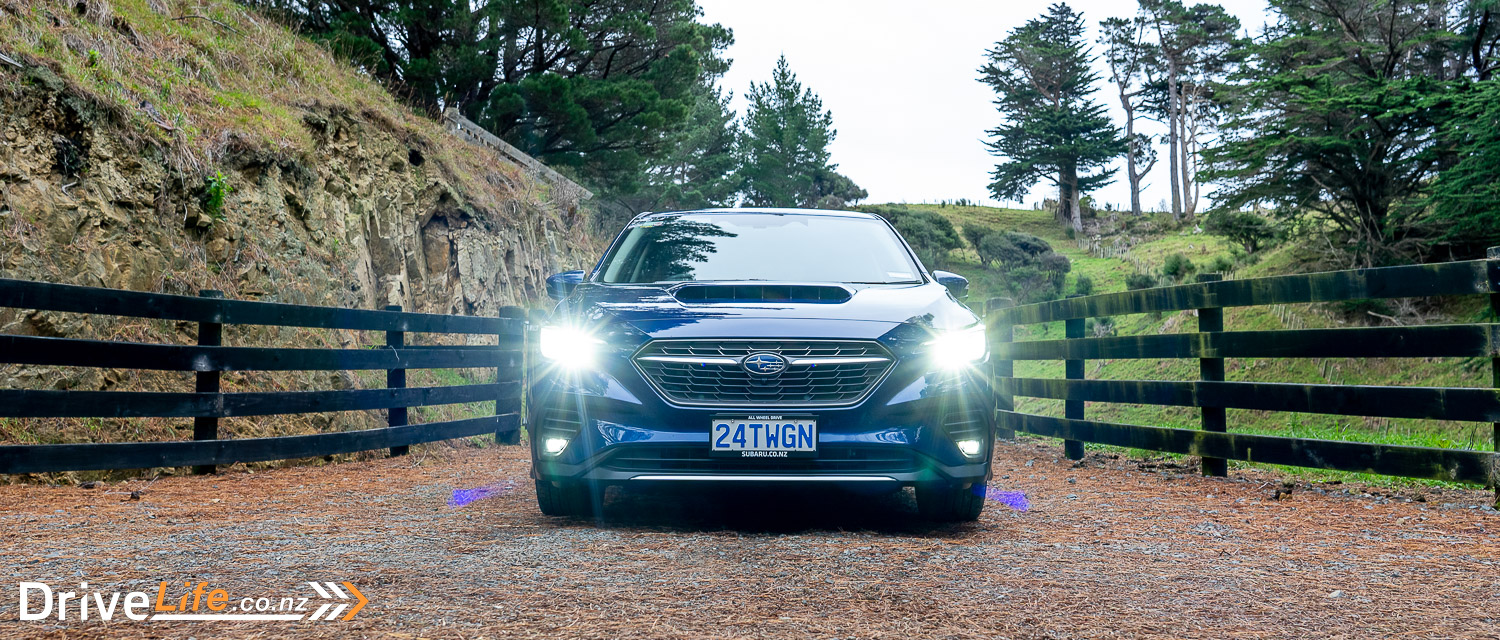
For me, the comparison here is between the Subaru Constantly Variable Transmission (CVT) and the DCT of the i30N. If I’m being honest, there’s no comparison. While Subaru has built an all-new CVT that they have named “Subaru Performance Transmission”, the dual-clutch system still wipes the floor with it.

There is no doubt in my mind that the new transmission in the WRX is better than the “old” one; it uses the stepped mode more, and is quicker to change. But all DCTs change gear faster than Subaru’s transmission. Don’t get me wrong; I loved the WRX, and it is an excellent car, but if we’re comparing transmissions then the i30N wins by a large margin. My dream scenario is that a Subaru engineer drives the i30N DCT and then realises just how much better it drives than the WRX, and does something about it.
But it’s not all about the transmission; is the WRX better than the i30N DCT? A huge plus in the WRX’s favour is all-wheel drive. In the wet weather that I tested the WRX in – and this i30N – it felt sure, planted, and safe at all times. In comparison, at times (in the wet weather) the i30N felt like an All Black trying to run across an ice skating rink in rugby boots. To be fair to the i30N, I did take both cars to a certain place where you can test out the limits of adhesion safely. At this place and on a dry day, I managed to get the WRX to 60km/h before it let go, and in the i30N? A slightly slower 57km/h. That’s not a huge difference, but I’d still prefer AWD. Imagine the WRX with the i30N’s DCT…dream car, big time.
There are other factors to consider in the i30N vs. WRX shootout. The WRX we tested was a wagon, so looked great and was oh-so practical. The i30N Fastback isn’t too far behind, but a wagon will always win the practicality race. But the final blow for the WRX (for me, at least) is the engine character or exhaust noise. There’s very little of either in the WRX, and that’s what I (and buyers) want.
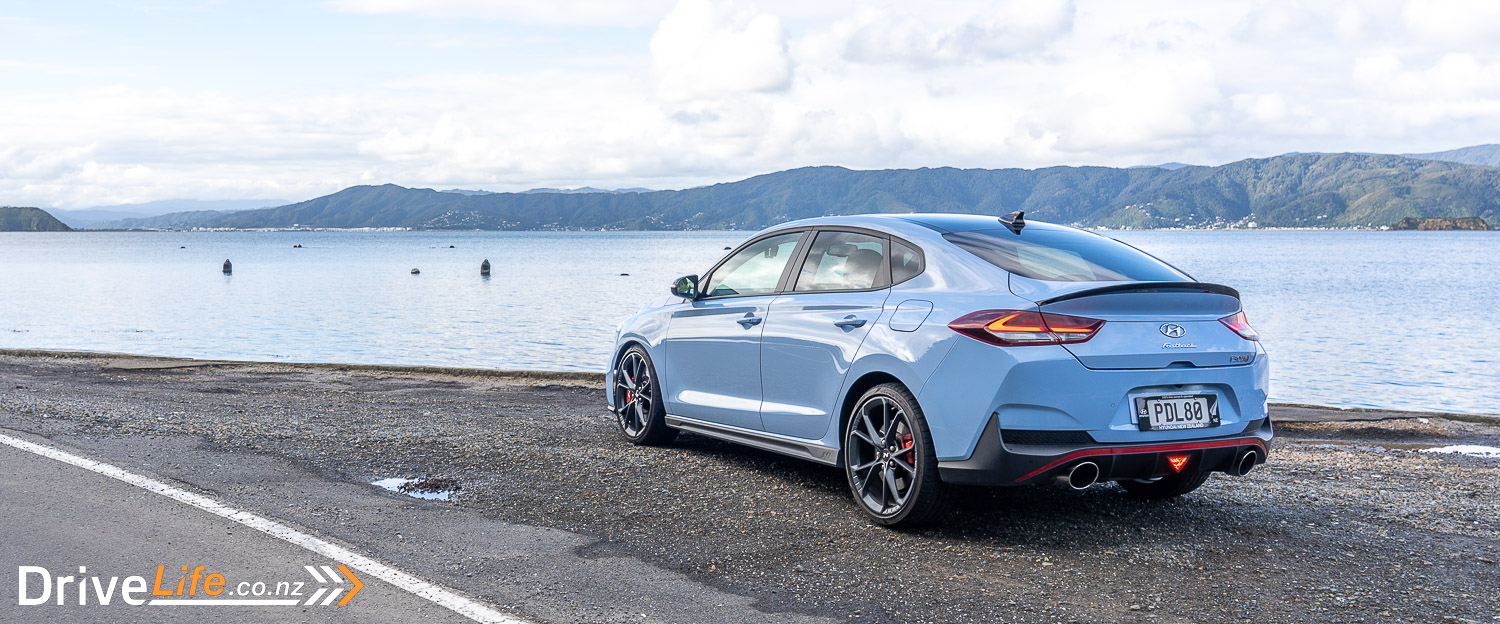
If you want to change gears manually in the i30N DCT, you can use the paddles, or old-school it and shift the lever across, and use that instead. The WRX only allows you to use the paddles to change gear. Not a huge problem but it does make the i30N feel a bit more sporty.
The winner of this comparison probably (yes, again) comes down to probably use; want a practical, everyday family car that is safe in all weather and looks great to boot? The WRX wins. An everyday car for a no-kids couple who wants to be able to go to Countdown and fill the boot with shopping, but still be a little naughty on the right road? The i30N is the clear winner here.
Not-so-good things for the i30N? The turning circle was as large as I remember, denting its use as a Daily Driver. Fuel consumption for my week for the DCT i30N was 9.5L/100Km. Alistair’s result in the same model – but a manual – was also 9.5L/100Km.

Tyre noise from those 235/35/19 Pirelli P-Zeroes can be a bit deafening on coarse chip seal, and really only quietens down on smooth asphalt. Like the Ioniq 5, the i30N has no rear window wiper. In the wet weather I had the car in, this was painful to say the least, with zero visibiity out the back window in the wet. Weirdly, the hatchback i30N does have a rear wiper. The Fastback version needs it just as much.
If I’m being picky, I’d love to see a red “start” button for the engine. A small thing, sure, but with that burble it makes, having a red go-button would only enhance the feeling of the i30N being something special.
At near-on $70K, the i30N DCT Fastback is climbing uncomfortably close to the new and all-wheel drive Volkswagen Golf R Mk8 (that we will be reviewing soon). That is a hot hatch to be reckoned with, and the extra dollars to get to it from the i30N’s price is not a massive leap.
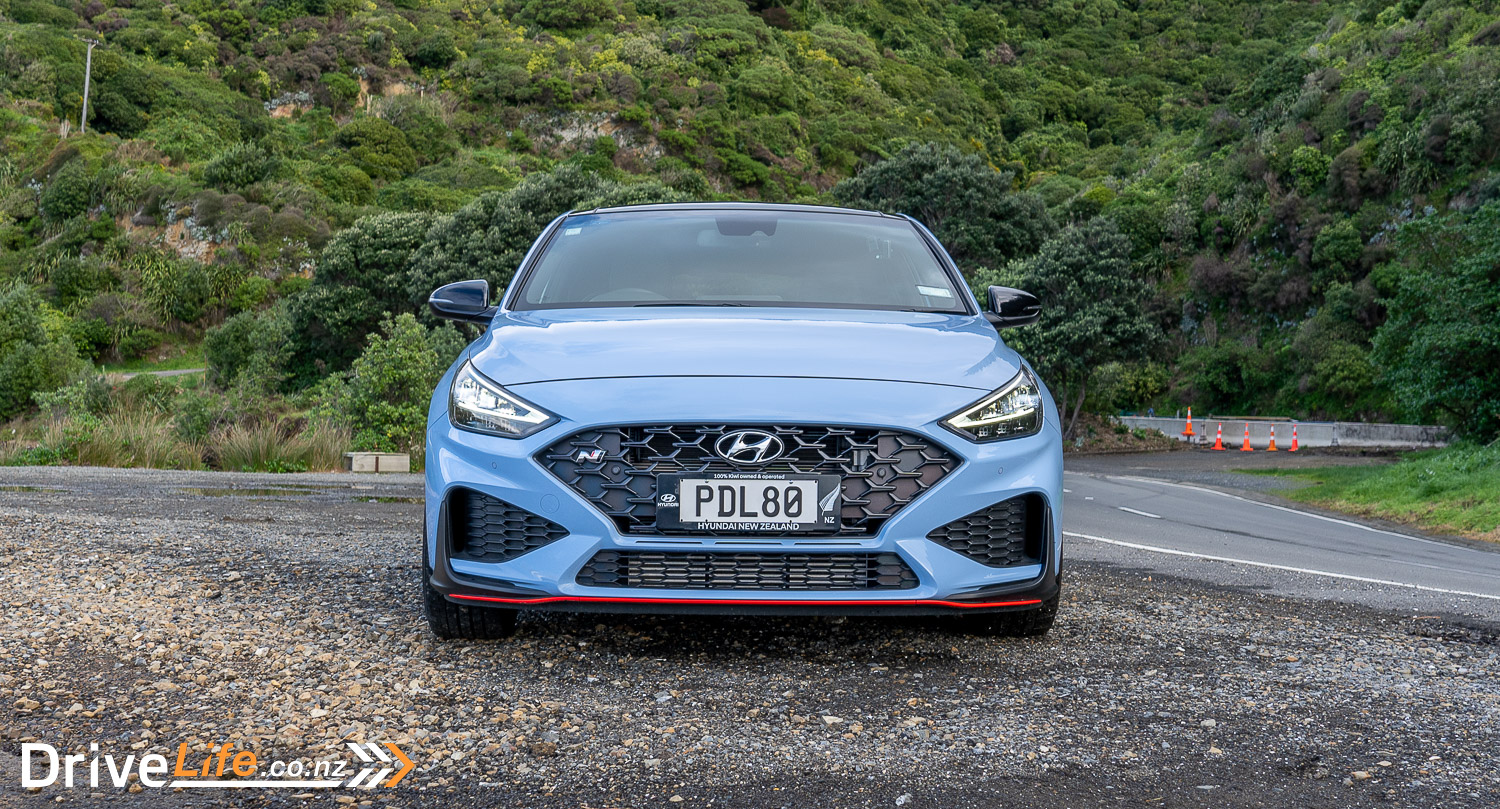
2022 Hyundai i30N DCT – Specifications
| Vehicle Type | 5-door Medium Fastback |
| Starting Price | $69,990 |
| Price as Tested | $69,990 |
| Engine | 2-litre turbocharged 4-cylinder, petrol engine |
| Power, Torque (kW/Nm) | 202/353 (206/392 with Over-boost) |
| Transmission | 8-Speed, Dual-Clutch, Automatic Transmission |
| Spare Wheel | Space saver |
| Kerb Weight, Kg | 1,429 |
| Length x Width x Height (mm) | 4455 x 1795 x 1417 |
| Cargo Capacity, litres | 436/1,337 |
| Fuel tank Capacity, litres | 50 |
| Fuel Economy, L/100km | Advertised Spec – 8.5 Real World Test – 9.5 Low Usage: 0-6 / Medium Usage 6-12 / High Usage 12+ |
| Towing Capacity Kg, unbraked/braked | N/A |
| Turning circle, metres | 11.6 Small: 6-10m / Medium 10-12m / Large 12m+ |
| Warranty | 10 year / 200,000 km anti-perforation corrosion body warranty 3 year / 100,000 km mechanical warranty 3 year / 100,000 km roadside assistance package |
| ANCAP Safety Ratings | ANCAP Rating – 5 stars – Link Rightcar.govt.nz – 4 Stars – PDL80 |
Have you enjoyed this review? Be sure to join our monthly email newsletter list so you don’t miss a single car review!


